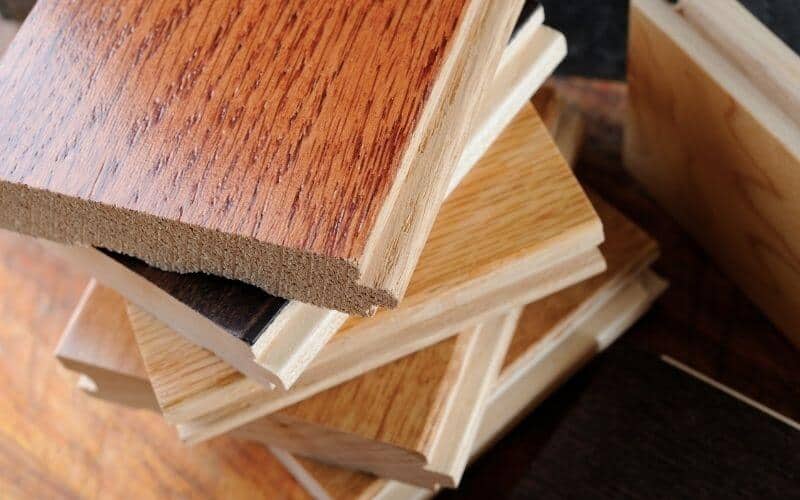Suppose you are interested in refinishing your hardwood floors. If such is the case, you should be interested finding the secret on how to tell if wood floor is sandable.
If you are fully knowledgeable about the refinishing process of wood floors, you should know that sanding the wood floor before sealing is a must.
Engineered flooring boards are not sandable. Thus, you should look out for the telltale signs of engineered floorboards, such as beveled edges that form a groove between sections and equal length of the planks.
Let’s get to more details on this subject matter, shall we?
Read: Can engineered wood floor be refinished?
How to Tell if Wood Floor is Sandable?
Table of Contents
As mentioned, engineered flooring boards shouldn’t be sanded under any circumstances. This is because Engineered flooring boards have laminated layers that can easily be damaged by sanding or abrading. What are the telltale signs of some of these wood floors? Well, let’s examine them below:
1. Beveled Edges that Form a Groove Between Sections
As mentioned earlier, this is one of the most noticeable signs of engineered or laminate flooring. The surface of the floor has beveled edges that form a groove between sections with single pieces that are three or four planks wide
2. Planks of the Same Length
Most solid hardwood floors which are sandable come in a variety of lengths. This doesn’t apply to engineered or laminate flooring that comes in the same length.
You can use tape to measure these planks; if they are all the same length, then you shouldn’t sand them because they’re probably engineered or laminate flooring.
Read: What you need to know about teak flooring
3. Check If the Wood is Plastic
Most laminate floors can be manufactured in such a way that they look like solid hardwood floors. You need to make sure that you’re dealing with hardwood floors before any sanding process.
To check, pick an inconspicuous area of the floor surface and drive a sharp chisel into the fiberboard. If it shows up plastic, then you shouldn’t sand it.
Alternatively, grind that area with a rotary tool and a grinding head accessory to check if the surface is wood or plastic.
4. Check for Exposed Nails on the Floor Surface
Apart from engineered or laminate floorings, solid hardwood floors that have been sanded way too many times shouldn’t be sanded again. The exposed nails can tell you if the board is too thin, in which case, you should refrain from sanding.
Use a chisel to excavate the nail to see if the nail is driven into the board’s tongue underneath the one that’s showing through. If such is the case, you should refrain from sanding because the boards are too thin.
5. Check the Cross-Section of the Flooring Boards
First, use a pry bar to pry up the area where the floor meets the wall, examine how thick the veneer in the cross-section of the flooring boards is.
You can measure the thickness with a ruler; if the thickness is less than 1/8 inch, then you shouldn’t sand it under any circumstances. It means that the floorboard is too thin.
Read: Dangers of sanding wood floors
Conclusion
Not only are engineered or laminate flooring “unsandable,” even solid hardwoods that have been sanded way too many times shouldn’t be sanded. When the floorboard is too thin, you should avoid sanding it not to damage the wood.
I hope this post answers all pending questions you might have on how to tell if wood floor is sandable. Also, don’t hesitate to call a professional if you are a bit confused about the right procedure to take.

